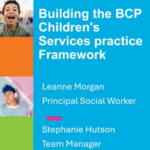Inspectors have found “generally high” social work morale in a children’s service struggling with high caseloads.
A focused visit of Derbyshire children’s services said leaders were “committed to investing in the right conditions for good social work to flourish” and had put in plans to “provide more support to social workers and increase capacity to reduce caseloads”.
This was happening despite a “significant increase” in the number of child protection plans over the past three years.
The service, rated ‘good’ by Ofsted in 2014, had “inconsistent” child protection work, and reviews of progress were not “sufficiently focused on the impact on children”, which inspectors said had led to drift.
“Management oversight is not strong enough to ensure that all children benefit from high quality and consistent social work practice that improves their circumstances in a timely way,” they found.
The report added that too often in written plans it was unclear to parents and carers what needed to change.
“Repeated descriptions of family crises, without succinct analysis of the impact on children, blur the picture for all parties and make it harder to steer planning to improve children’s circumstances.”
‘Increased investment’
To address capacity issues and improve oversight of frontline staff, the council had agreed to “significantly increase investment” in the service, Ofsted said, and it added the workforce development plan focused on addressing capacity issues and retention.
“Many social workers are still relatively inexperienced but are positive about the training and development offer. Morale is generally high, and although caseloads are high, staff are supported to manage their workloads,” the report said.
It added that plans to introduce practice supervisors had been designed to develop inexperienced social workers.
Ofsted told the council to improve the quality of child protection planning and management oversight and supervision, but also to ensure independent chairing of conferences and reviews “consistently focus” on participants and the risk of harm to children.



 Bournemouth, Christchurch and Poole
Bournemouth, Christchurch and Poole  Hampshire County Council
Hampshire County Council  Oxfordshire County Council
Oxfordshire County Council  South Gloucestershire Council
South Gloucestershire Council  Wokingham Borough Council
Wokingham Borough Council  Harnessing social work values to shape your career pathway
Harnessing social work values to shape your career pathway  Webinar: building a practice framework with the influence of practitioner voice
Webinar: building a practice framework with the influence of practitioner voice  ‘They don’t have to retell their story’: building long-lasting relationships with children and young people
‘They don’t have to retell their story’: building long-lasting relationships with children and young people  Podcast: returning to social work after becoming a first-time parent
Podcast: returning to social work after becoming a first-time parent  Workforce Insights – showcasing a selection of the sector’s top recruiters
Workforce Insights – showcasing a selection of the sector’s top recruiters  Free CPD on Parkinson’s for health and social care staff
Free CPD on Parkinson’s for health and social care staff 

 Facebook
Facebook X
X LinkedIn
LinkedIn Instagram
Instagram
Comments are closed.